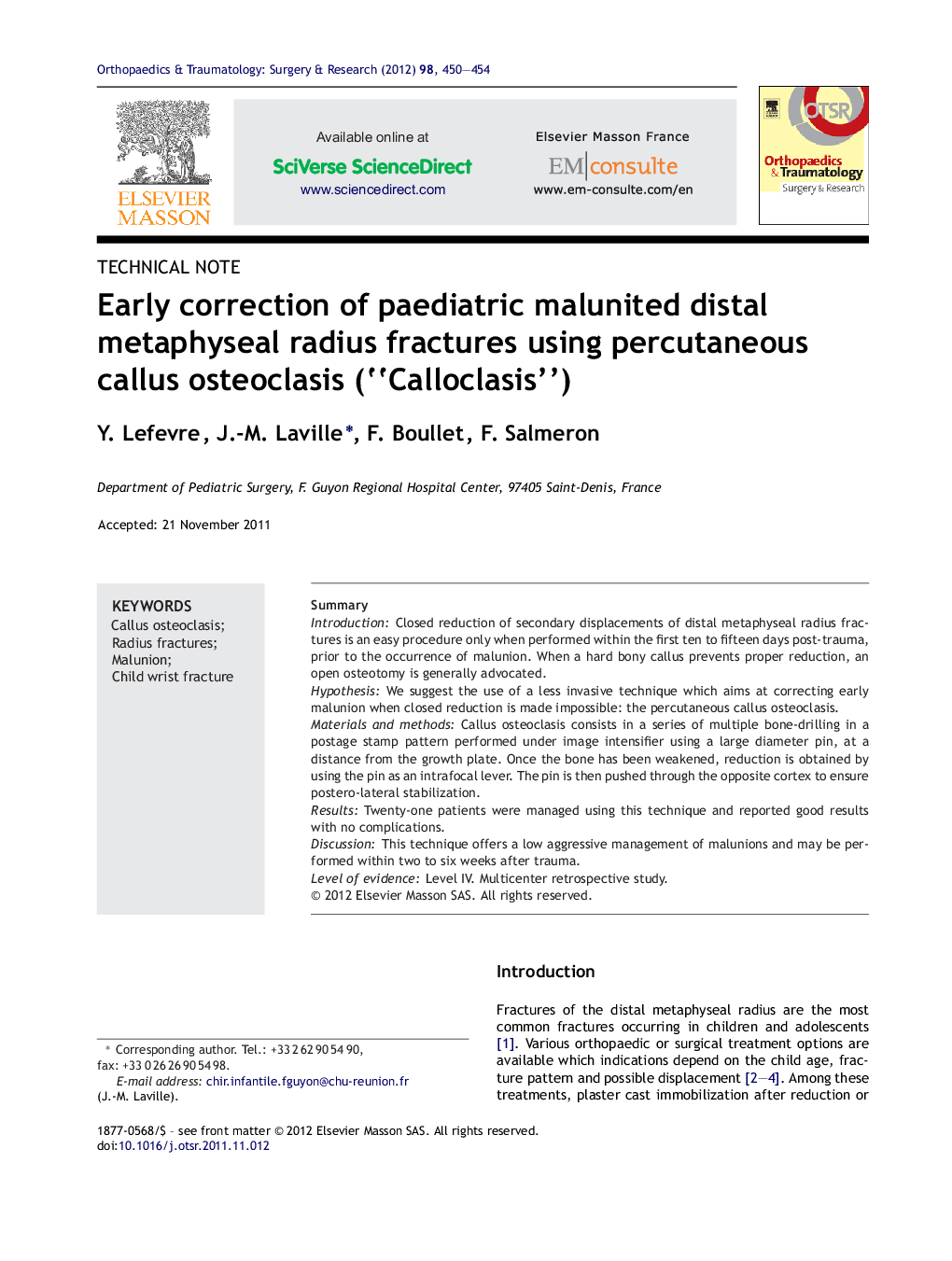| Article ID | Journal | Published Year | Pages | File Type |
|---|---|---|---|---|
| 4081831 | Orthopaedics & Traumatology: Surgery & Research | 2012 | 5 Pages |
SummaryIntroductionClosed reduction of secondary displacements of distal metaphyseal radius fractures is an easy procedure only when performed within the first ten to fifteen days post-trauma, prior to the occurrence of malunion. When a hard bony callus prevents proper reduction, an open osteotomy is generally advocated.HypothesisWe suggest the use of a less invasive technique which aims at correcting early malunion when closed reduction is made impossible: the percutaneous callus osteoclasis.Materials and methodsCallus osteoclasis consists in a series of multiple bone-drilling in a postage stamp pattern performed under image intensifier using a large diameter pin, at a distance from the growth plate. Once the bone has been weakened, reduction is obtained by using the pin as an intrafocal lever. The pin is then pushed through the opposite cortex to ensure postero-lateral stabilization.ResultsTwenty-one patients were managed using this technique and reported good results with no complications.DiscussionThis technique offers a low aggressive management of malunions and may be performed within two to six weeks after trauma.Level of evidenceLevel IV. Multicenter retrospective study.
